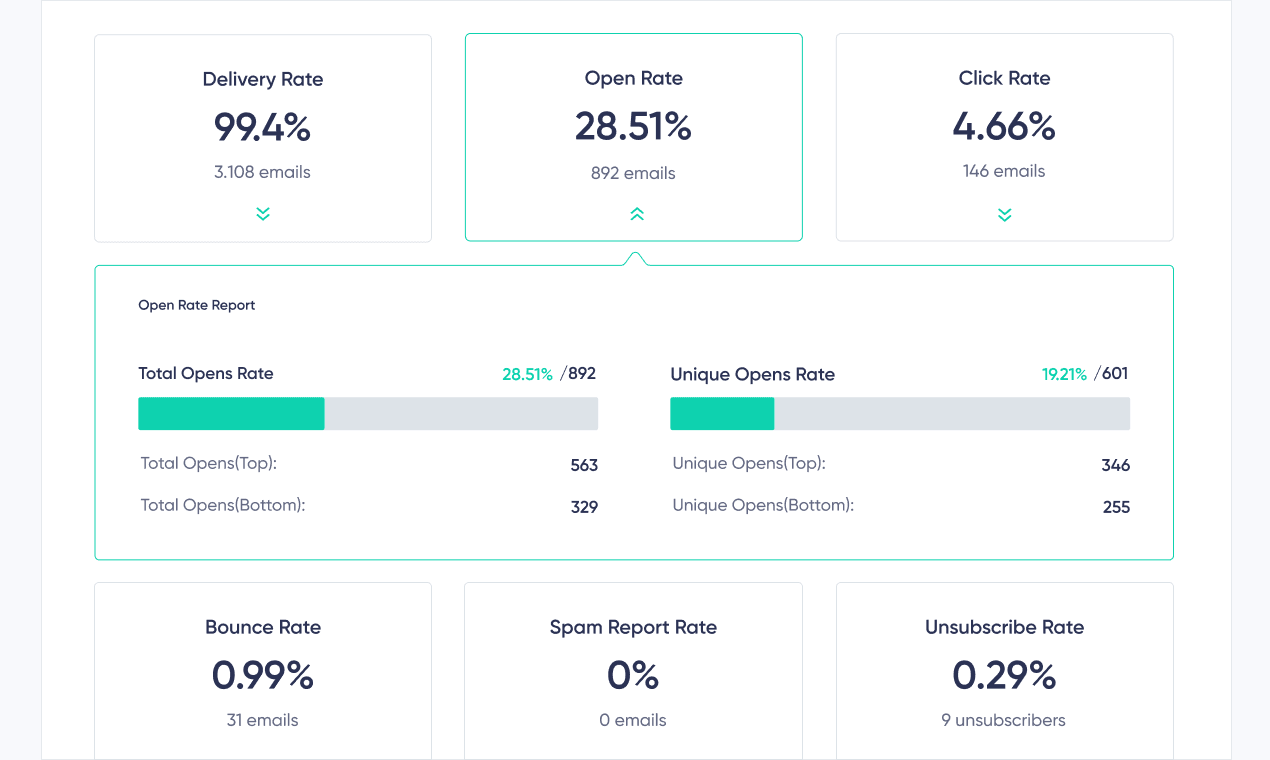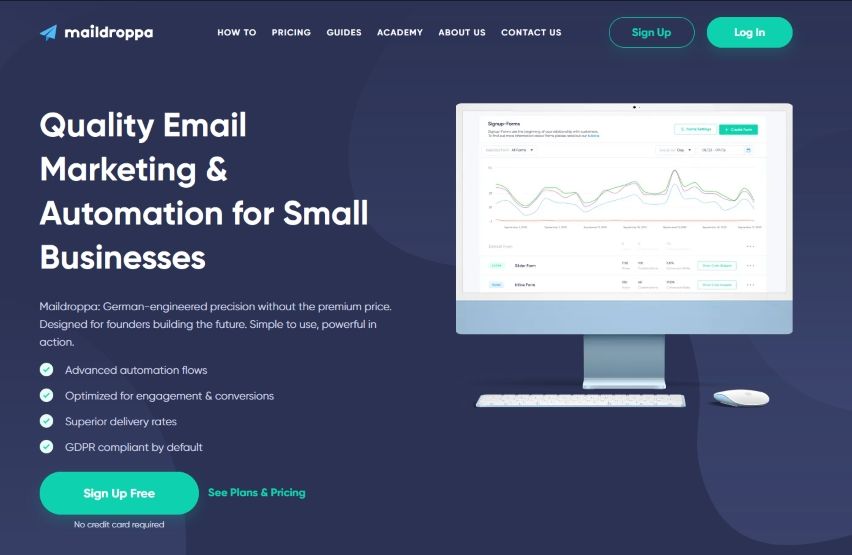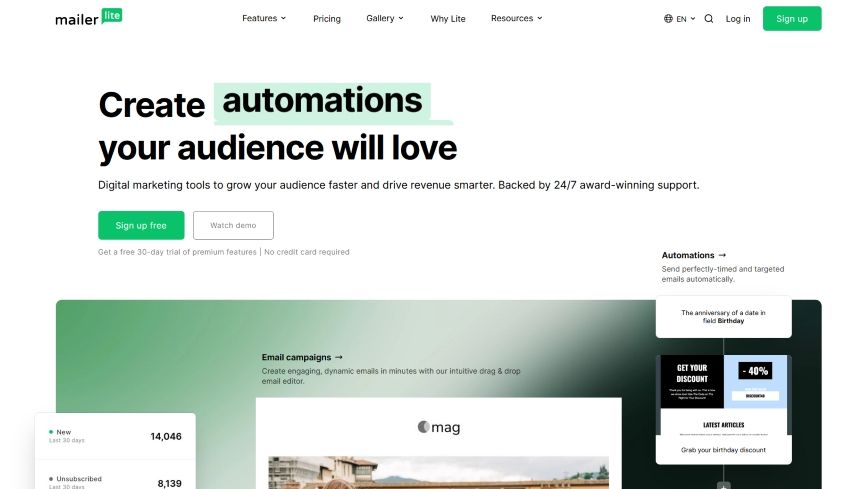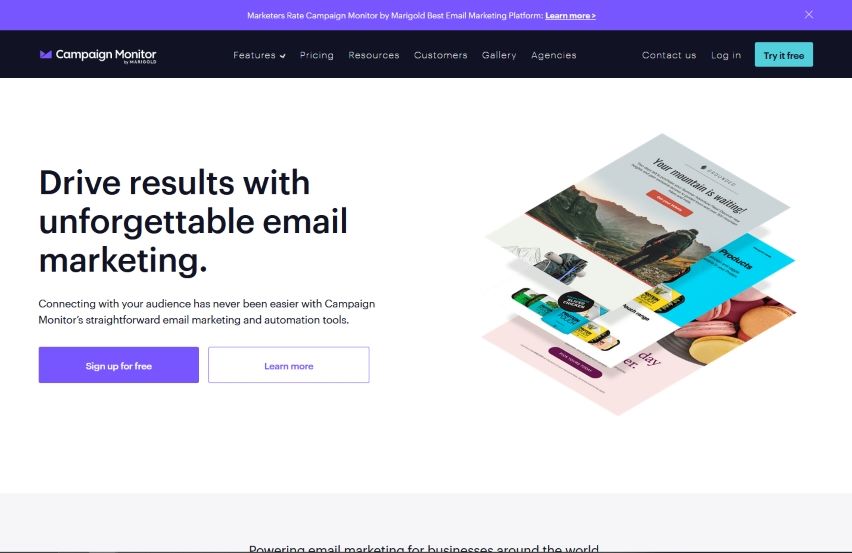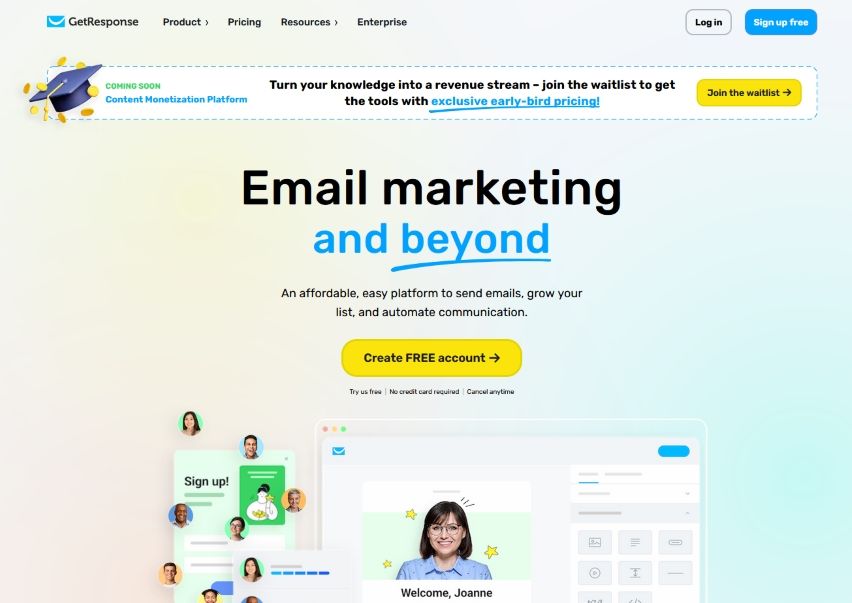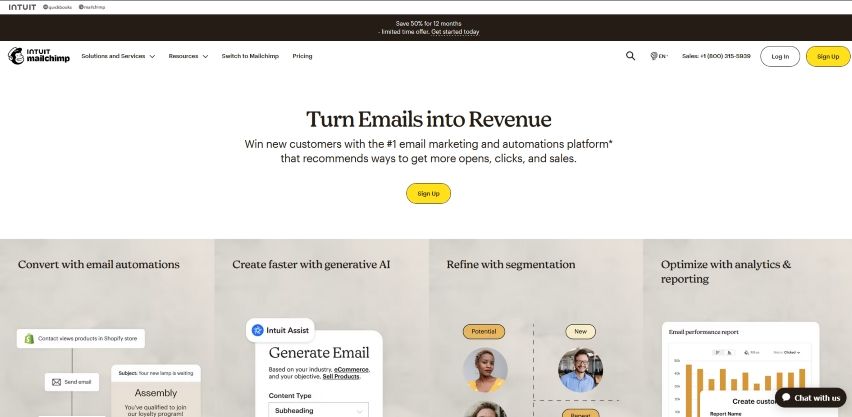Contents
the email tool that makes email marketing simple
The Best Email Newsletter Platforms and Apps in 2025
Published: October 28, 2025
Using the best newsletter app has a huge impact on how effectively you communicate with your customers. We've chosen affordability, simplicity, and scalability as the most important aspects in deciding on this year's best email newsletter platforms. In addition, a good platform should have all the features that you need to manage your newsletter easily and effectively. In this article, we've weighed up some popular options and created a list based on their performance.
What Is an Email Newsletter?
An email newsletter is a regularly scheduled email sent to a list of subscribers. They're a great way to share updates, industry news, or promotional offers. The goal is to establish a regular form of communication with your subscribers and keep them interested in your product.
What Should You Look for in an Email Newsletter Platform or App?
Before you can find the right newsletter app, you need to know exactly what you're looking for. What everyone wants or needs when it comes to sending newsletters can be different but we've chosen a few of the most important features.
Affordability
Perhaps the most important aspect of any product or service used by a business is how much it costs. The less money you spend on services for your business, the more profit you can make. Naturally, this always needs to be weighed against the effectiveness of the service. There's no point in going for the cheapest option if it doesn't work properly. However, affordability is especially important when you're first starting out and need to keep costs as low as possible. Email newsletter tools that offer free trials or discounts at the beginning will rank higher on this list as they save you money when you need it the most.
A good platform values transparency in its pricing. Ensure you understand what it means by "Free Trial" and "Free Plan". Free Trial usually means it's only free for a limited time – normally a month. Free Plan means you can use it as long as you like providing you don't go over a certain limitation, e.g., number of email contacts or number of emails sent.
Simplicity
A major factor when choosing the best newsletter platform is simplicity. If it's your first time sending a newsletter, you don't want to spend more time learning how a platform works than you do sending emails to your subscribers. The simpler and more intuitive the platform is, the better. After all, time is money – money that you could rather be investing into your business.
Scalability
When it comes to email marketing, scalability is directly linked to automation. In the beginning, you might be able to manually insert the names of each of your subscribers into your emails in a few minutes. Remember though, when you get to 10,000 people on your email list, this will take hours. That's why it's so important to choose an email platform that automates these tasks for you so that it can scale with your business.
What Features Should Newsletter Software Have?
Email marketing isn't merely for sending emails. It must help you market your business effectively and affordably. A good email newsletter tool helps you do things like track your campaign to see what's working and what isn't, create a killer landing page, make customized signup forms, and manage your email subscriber list effectively.
List management
One of the key features that any good newsletter software should have is the ability to manage your mailing list. As your subscriber count grows, you're going to want to segment them based on their behavior and demographics for more effective communication. The longer you have the list, the more inactive and unresponsive subscribers you're going to end up with. Because of this, the software that you choose needs to be effective at cleaning out unresponsive subscribers, re-engaging those who might still be interested, and adding new ones. The more automated these tasks are, like removing a subscriber after a certain number of email bounces, the less time you have to spend doing them yourself.
Email marketing analytics and tracking
One of the easiest ways that you can improve a struggling email marketing campaign or newsletter is by looking at which areas you're under-performing in. It's necessary to track your campaigns to learn if they're successful or need tweaking. Any good email software will have a dashboard where you can easily view key performance indicators.
The easier to understand and more detailed these are, the better you can determine what exactly needs to be improved. You should be able to track things like open and click-through rates. A bonus is an A/B testing feature to really optimize your emails.
Email automation features
You need to be able to prepare your emails and then set the whole thing to autopilot. You shouldn't have to manually send emails every time a customer makes a purchase. You have more important business tasks to attend to. It's not worth spending on email software without automation features.
Automation becomes increasingly important as the size of your mailing list grows. Your email marketing needs to be able to scale with your business without using up too much of your time, and email automation makes sure that it can. Properly automated email software has a number of benefits. Perhaps the most important of them all is time-saving; email automation can reduce a task like sending out a personalized newsletter from hours to just a few minutes. You'll have more time to spend focusing on crafting engaging subject lines or improving your email content.
Segmentation attributes
You cannot use the same marketing blurb for all your customers. The platform you choose must allow you to segment customers based on demographics like their culture. interests, and preferences.
Templates
You need inbuilt email templates to help you launch your campaigns fast. With these, you simply choose a suitable template and edit its pre-existing content. This saves time in designing a letter from scratch and ensures a professional format.
How Much Do the Best Email Newsletter Platforms Cost?
| EMAIL NEWSLETTER SERVICE | PRICE PER MONTH FOR 1,000 SUBSCRIBERS | PRICE PER MONTH FOR 10,000 SUBSCRIBERS |
|---|---|---|
| Maildroppa | $5 | $40 |
| MailerLite | $13.50 | $40 |
| Mailchimp | $30 | $96.89 |
| GetResponse | $48.40 | $93.50 |
| Omnisend | $20 | $132 |
| Campaign Monitor | $59 | $189 |
This table is based on prices taken on 07/06/2024
Maildroppa
Maildroppa is an incredibly effective email marketing platform that was designed with two things in mind: simplicity and affordability. Signing up gets you access to the full suite of features completely free for your first 100 subscribers, for as long as you need. This means that you pay the least when you have the least to spend.
It also means that you can set up all of the more advanced features right from the beginning. You don't have to wait until you have a premium plan to set up your newsletter automation or advanced analytics. And, because the free plan runs forever, you can take as much time as you need. This makes scaling your email marketing easy. You can run your free newsletter for 100 subscribers just like you would a paid newsletter of 100,000.
Maildroppa is the most affordable option on this list, meaning that it's the perfect choice to start your newsletter and grow it into something highly effective.
Omnisend
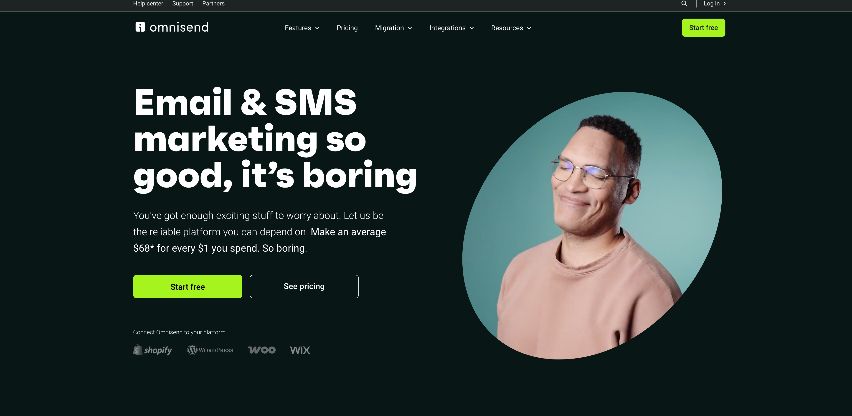
The free plan covers up to 250 contacts and includes 500 emails/month, along with basic SMS credits and key features like automation and A/B testing. However, if your list grows quickly or you need more advanced reporting and SMS sends, you’ll need to upgrade. Still, for small ecommerce businesses just starting out, Omnisend offers a powerful toolkit with zero upfront cost.
MailerLite
MailerLite is an email marketing SaaS made with simplicity in mind. The reason it ranks so highly on our list is because of its great free plan and overall affordability. It's valid for up to 1, 000 subscribers which makes it easy and affordable when you're starting out with your first email newsletter. They also offer a free trial for their premium version, which lets you test out whether you need the more advanced features. In addition, it's very simple to use.
The downside is that it's often simple to use because the more advanced features like email marketing automation and detailed reporting aren't available on the free plan. It also doesn't offer the same level of customization as some of the other options. Nevertheless, the free plan is a great option if you want a very basic newsletter for between 500 and 1, 000 subscribers.
Campaign Monitor
Campaign Monitor is a great email marketing tool for those looking to manage a newsletter for multiple clients. You can add as many different clients as you want to your profile, create custom templates, set up automations for each client, and lock specific sections of emails and templates to prevent editing.
However, this platform can be quite complicated compared to the others on this list. Their free plan is also borderline nonexistent, only allowing for a campaign to be sent to a maximum of 5 subscribers. This is unfortunate because they're the most expensive option on this list.
Campaign Monitor is a great option if you're a professional with a big budget managing multiple email campaigns, but it's probably not the best choice if you're doing a newsletter for your own small business.
GetResponse
GetResponse is an email marketing service that stands out for some of its more advanced features. It has great webinar hosting and integration, as well as highly customizable automation workflows. This allows you to create an email marketing campaign that's linked to the rest of your marketing efforts.
Unfortunately, the free plan is only valid for 30 days. After this, the service will cost you a minimum of $15.60, but as much as $48.40 for 1,000 subscribers. This makes it one of the most expensive options on this list. They do have unlimited emails per subscriber, so they're worth considering if you need to send out lots of emails per month with high levels of advanced automation.
Mailchimp
As the biggest of the email marketing tools, Mailchimp offers a known quantity. They have a large number of templates and automation options available. They're also very reliable and offer dedicated 24/7 support.
The main reason the platform comes in last on our list is because this is only true for some of their plans. The free plan, for example, doesn't have access to any kind of support after the first 30 days. It also doesn't have any kind of email scheduling or automation. And, while the better plans start out as reasonably affordable, the price doubles after the first year. If you're only looking to run a newsletter for a few months this won't bother you, but if you're looking to develop your email marketing long-term, you're likely to find yourself looking for a more affordable option fairly quickly.
Newsletter Service Honorable Mentions
The following email marketing platforms are great choices in specific circumstances but they didn't quite make our top 5 list for one or more reasons.
- Shopify - easily integrated with your ecommerce
- Beehiiv - great for monetizing your newsletter
- Convertkit - offers a wide variety of automation features
- Flodesk - user-friendly with a wide variety of email templates
- Constant Contact - a solid all-rounder with good email list segmentation
Conclusion
The choice of newsletter platform is especially important when you're first creating a newsletter, as the email marketing software you start with will likely be the one that you stay with. Ultimately your goal should be to find a platform that's simple, affordable, scalable, and has all of the features that your specific business needs. We believe that platform is Maildroppa but it's up to you to decide what's best for your business.
